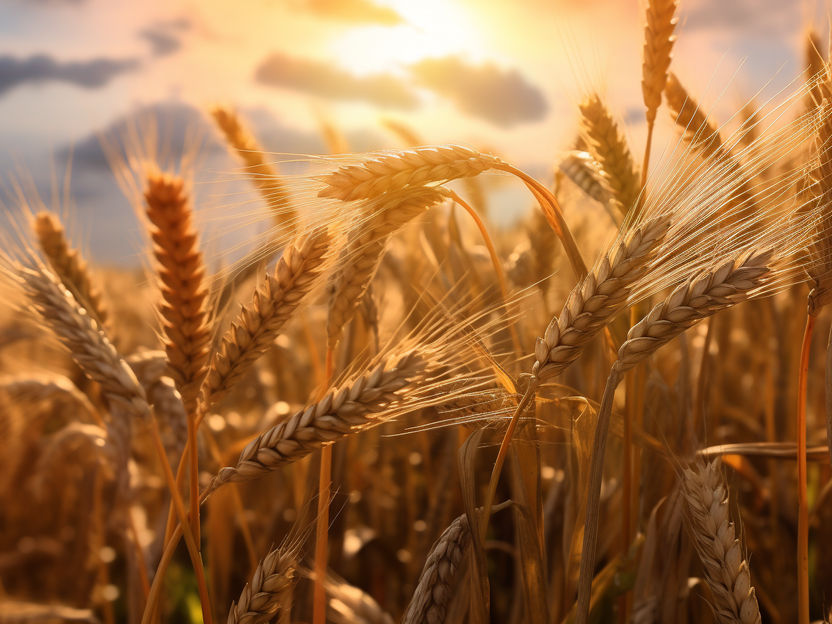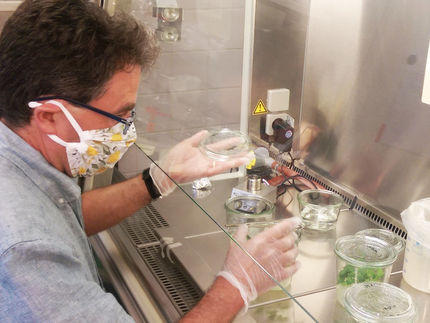Plasma strengthens barley
Researchers want to arm cereals against drought and drought stress - with plasma-treated water
Advertisement
In a study, a team of researchers from Greifswald has shown that plasma-treated water makes cereal plants react better to drought stress and thus to weather extremes such as droughts. To this end, individual parameters that are considered indicators of oxidative stress in a plant have been compared with each other and indications of a connection between plasma treatment and strengthening of the plant have been formulated.

Symbol image
computer generated picture
The research team is part of the alliance 'PHYSICS FOR FOOD - A REGION THINKS AROUND!' initiated by Neubrandenburg University of Applied Sciences, the Leibniz Institute for Plasma Science and Technology e.V. (INP) in Greifswald and other business partners in the region. The alliance is researching environmentally friendly physical methods for the agricultural and food industries to find an alternative answer to the challenges of the future.
Cold atmospheric pressure plasma represents a physical method to reduce the use of chemical agents. Among other things, it consists of electrons, ions, neutral atoms and molecules as well as reactive species. Plasma-treated water is produced at the INP in Greifswald.
The results of the study by researchers at INP and the Institute of Botany and Landscape Ecology at the University of Greifswald in the lead project PHYSICS FOR CROPPING SYSTEMS have now been published in the Journal of Plant Growth Regulation.
Barley plants in the greenhouse were sprayed with demineralized, plasma-treated water as well as with demineralized water only and then exposed to oxidative stress such as drought. The researchers analyzed the effects of these treatments in the leaves and in the roots.
They have found evidence of links between the previously found benefits of direct plasma treatment - e.g. inactivation of fungi, viruses or bacteria that cause plant diseases, and favoring germination and growth - and the influence of the antioxidant system. Thus, when water is treated with plasma, hydrogen peroxide and nitric oxide, among others, are produced in low concentrations. Both molecules stimulate the plant's signaling network to produce enzymatic and nonenzymatic antioxidants, i.e., to fight oxidative stress. Oxidative stress parameters could be compared in leaf as well as in root - in both cases with and without plasma treatment - and evidence for correlations could be documented.
Prof. Dr. rer. nat. Christine Stöhr, Professor of Plant Physiology at the Institute of Botany for Landscape Ecology at the University of Greifswald and head of the research group, sums up: "The components that the plant needs to be able to react appropriately to oxidative stress have been provided by the plasma-treated water. The question remains whether other processes are taking place. Metabolism in a plant is extremely extensive. We are now looking at the plant's gene expression to analyze which genes are turned on that cause these reactions."
Another remarkable finding was that the effect of the plasma-treated water was detectable through the leaf and into the root. However, it also came out that the antioxidants in the plant, which were enhanced by the plasma water, were only detectable when the plant was really exposed to drought stress. Here we are talking about a so-called priming effect. Priming means to induce a physiological state of the plant in order to be able to react better and more strongly to abiotic - such as drought - and biotic stress - such as pathogens. This type of training may well be useful for barley in the future, and plasma-treated water could be used as a priming agent.
Dr. Henrike Brust, a biologist at the Leibniz Institute for Plasma Science and Technology e.V. (INP) and member of the research group, adds: "This study shows that plasma-treated water definitely has an effect on plant physiology. Now we need to find out further how exactly the processes take place in the plant that make it respond better to oxidative stress."
The results of the study give cause for optimism. Therefore, the researchers in the PHYSICS FOR FOOD alliance continue to consistently pursue this path in order to contribute to strengthening plant resilience to climatic changes.
Note: This article has been translated using a computer system without human intervention. LUMITOS offers these automatic translations to present a wider range of current news. Since this article has been translated with automatic translation, it is possible that it contains errors in vocabulary, syntax or grammar. The original article in German can be found here.



























































